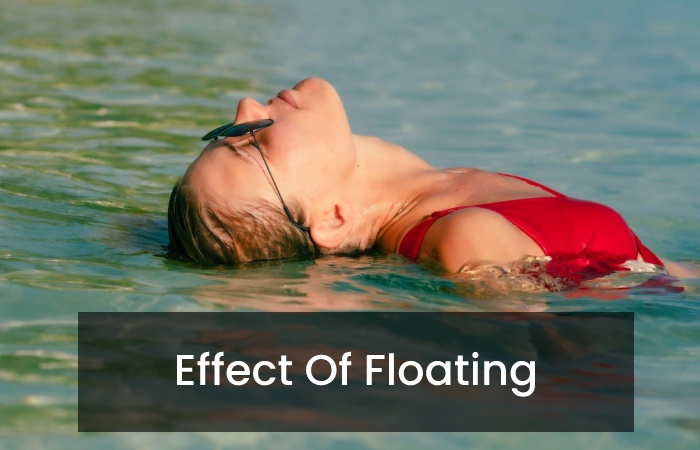Imagine yourself floating weightlessly through a saltwater pool while gentle sounds caress your ears. The pleasant warmness of the water and the dimmed light make you forget everything around you. You have this fascinating experience while floating. We want to go into this in today’s blog post. So much can be revealed: Floating has several positive, scientifically proven effects on the body and mind!
The enormous professional and personal demands of our time trigger stress and tension in many people. To withstand them, you must free your brain and mind from external stimuli from time to time. Floating is a delightful form of relaxation and is now offered in many spa and wellness facilities throughout Germany.
Table of Contents
What Is Floating?
Floating is a wellness trend that promises deep physical and mental relaxation. Sealed off from outside stimuli, you float relaxed in a tank or swimming pool filled with salt water. The salt content of the water is so high that the force of gravity in it is overridden. At a pleasant 34 °C water temperature, the muscles can relax optimally, which is why a recovery effect sets in after a short time.
Floating – This Is How The Relaxation Technique Works
You lie down in a kind of bathtub filled with a saltwater solution. The salt increases the water’s density so that the human body appears to be floating. The water temperature corresponds to the temperature of your outer skin, which is why you feel neither heat nor cold, and the body does not have to use its energy to compensate for the temperature. It is comfortable in dim, colored light but works in total darkness. Meditative music is also not a must.
The Effect Of Floating
The effect of floating in the brine pool was already being researched in the 1950s. Even then, it was known that the withdrawal of visual and acoustic stimuli contributes enormously to stress reduction and deep relaxation since the brain and nervous system have no more external data to process.
In addition, floating relieves chronic tension and migraines and positively affects rheumatism and joint problems. Those who suffer from skin diseases such as neurodermatitis or acne benefit from the soothing effect of the salty water. Floating is not only used in the wellness area: the method can reduce depressive states and is therefore also used for therapeutic purposes.
How Long Does Floating Last?
You usually spend 40 to 60 minutes in the floating tank, but the duration can vary depending on the provider. Plan around 1.5 hours for your floating experience so that you can get into the pool stress-free and afterwards shower and get dressed in peace.
How Much Does Floating Cost?
The prices are, of course, dependent on the provider. Plan between 60 and 80 euros for 1 hour of deep relaxation. Those who prefer floats for two pay just over 100 euros for the same period.
When Shouldn’t I Float?
In principle, people over the age of 16 can enjoy weightlessness. Anyone suffering from external blood pressure, heart problems, dizzy spells, severe depression or psychosis should only use the tank after consulting a doctor. Floating is not recommended in the case of epilepsy or open wounds.
Conclusion
Floating is an extraordinary experience that goes hand in hand with deep relaxation. We tried it too and were amazed by the weightlessness in the water pool – almost like bathing in the Dead Sea! The cozy atmosphere ensures relaxing moments that are equivalent to a short vacation. The effectiveness on the body has been scientifically proven and speaks for the wellness trend, which is becoming increasingly popular. If there is nothing against it from a medical point of view, you should dare the step into the pool.
